… with Captain Sherman d’Entremont and Troy Amirault at Dennis Point Wharf
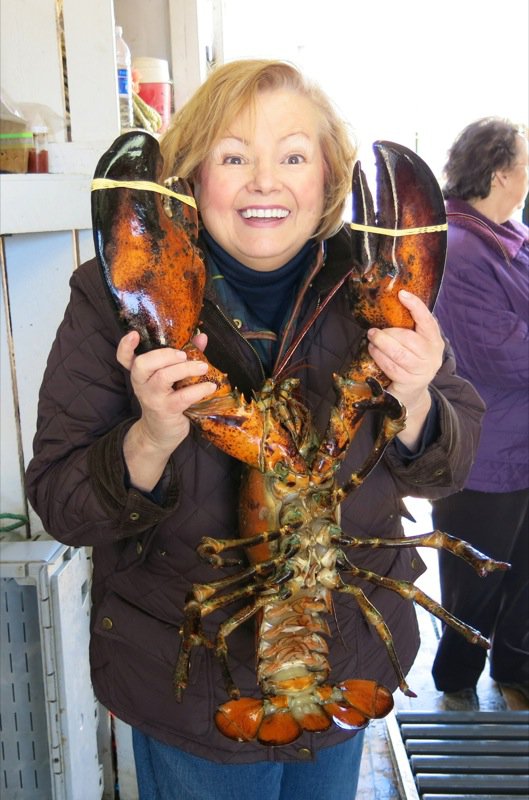
Arriving at La Musée des Acadiens des Pubnicos shortly after 2pm for our 2 hour scheduled tour after a bite of scrumptious Spring Harvest Hamburger Soup, Bernice announced, “I have a surprise for you. There has been a change of plans.” 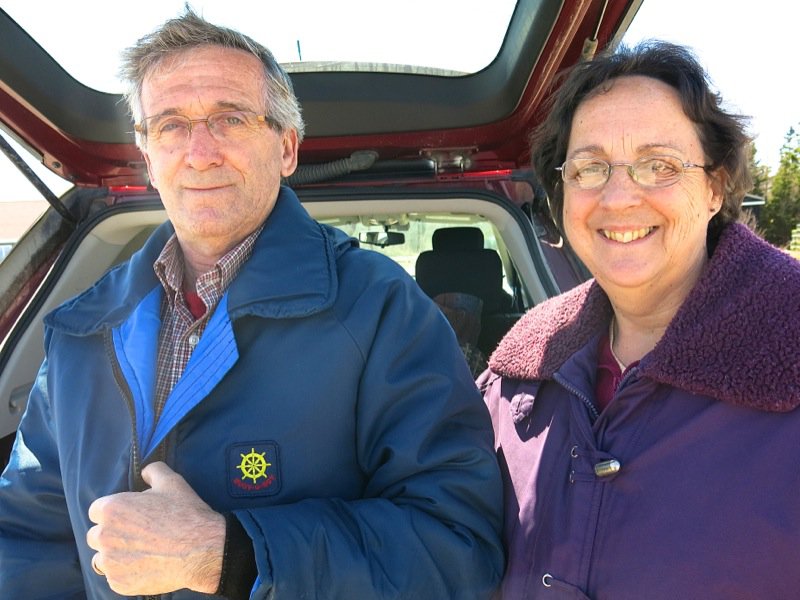
“We are going lobster fishing!” What a thrill! “However did you manage to swing that, Bernice?” “Well, you told me that your focus was primarily on food and I was initially just going to take you down to the wharf as the lobster is what our life revolves around here, but a little magic happened!” Réal’s eyes were twinkling as much as Bernice’s.
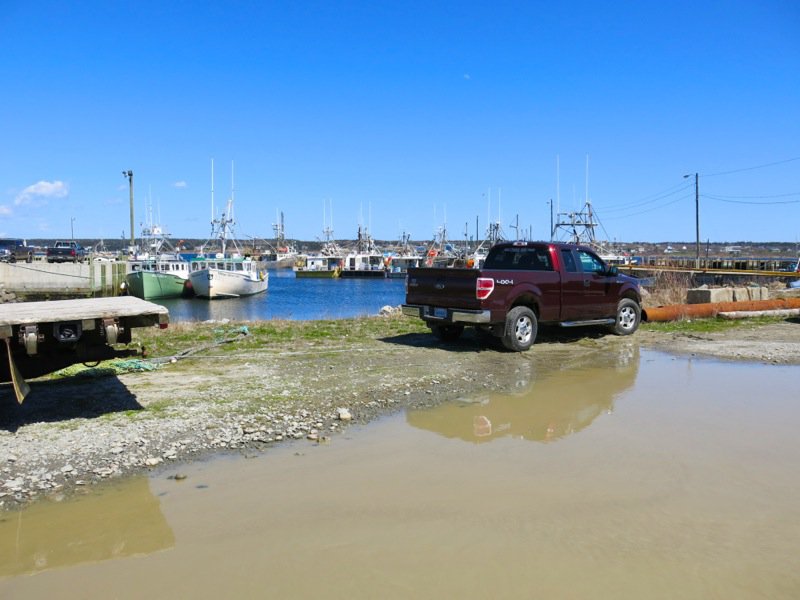
Not to lose a second, we jumped into our vehicle and followed them to Dennis Point Wharf, the Lobster Capital of North America – though that title may be claimed by another nearby area, this wharf has the biggest amount of lobster landed per capita in North America.
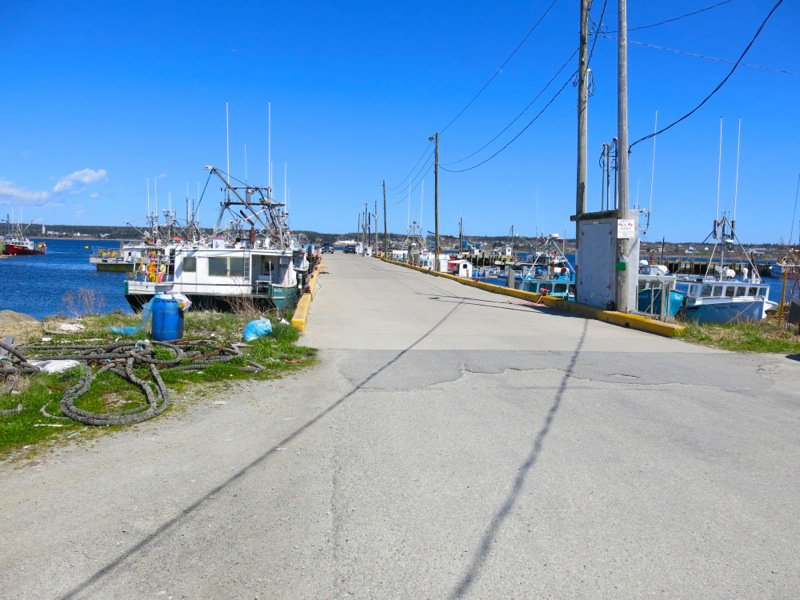
This is one massive wharf!
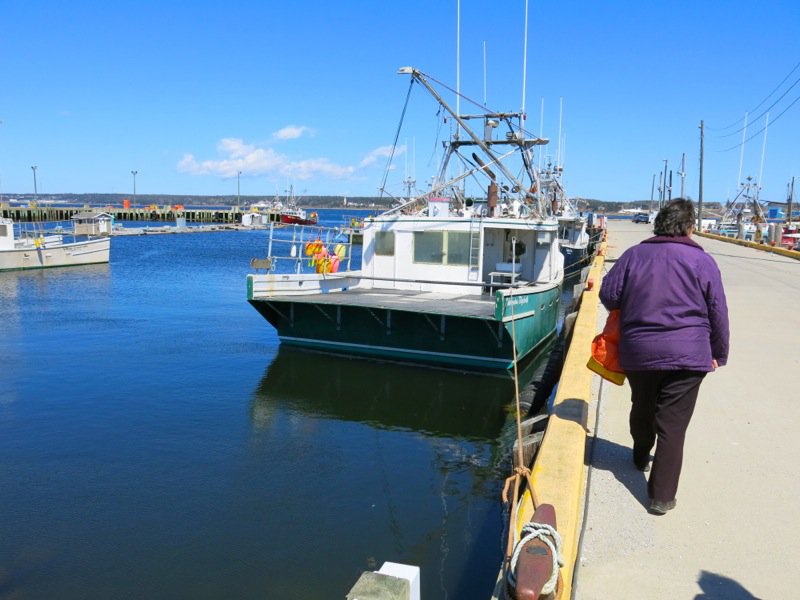
There was a lot going on and so many different kinds of boats that I stopped participating in the conversation.
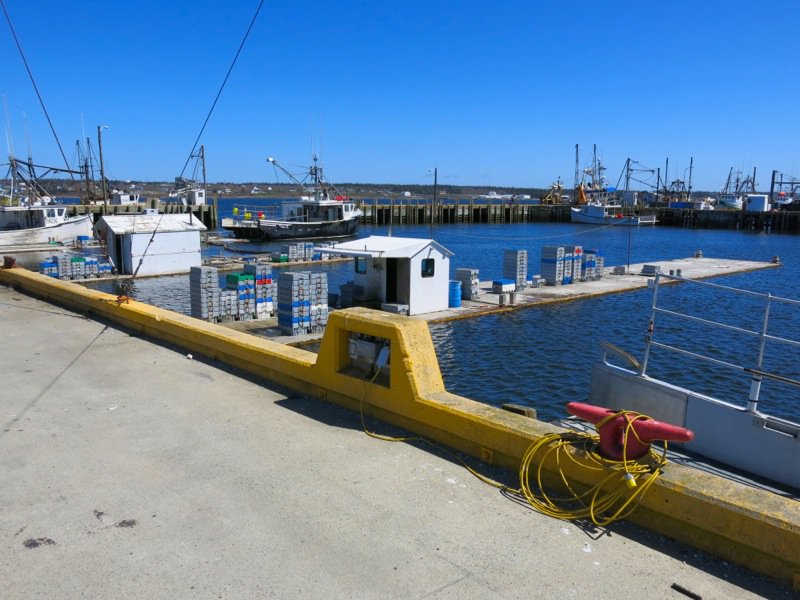
Fishing stages (the little huts) built right on the water with their own piers off of the wharf had me captivated. What is going on here?
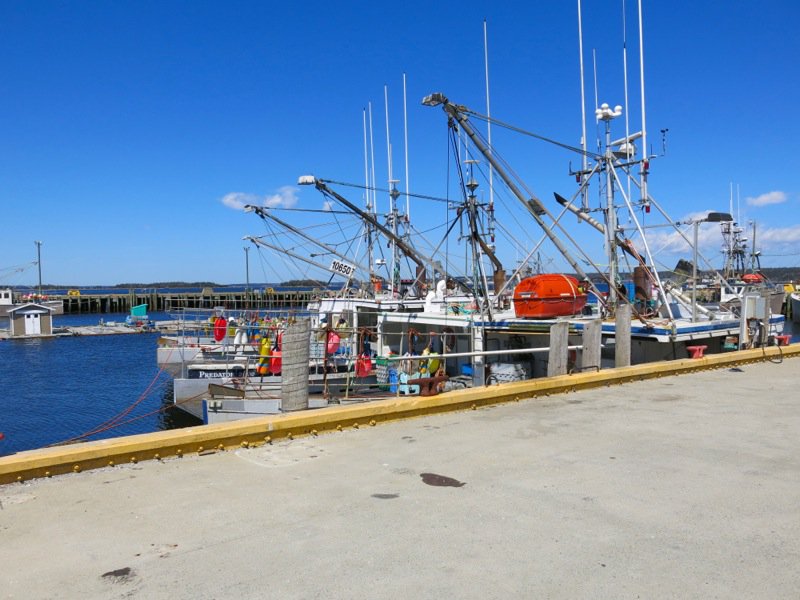
On the other side of the wharf, such massive boats with such foreign looking gear. I did recognize the vertical shafts as antennas, yet what was the pulley looking structure high over each boat with a light on the end of it?
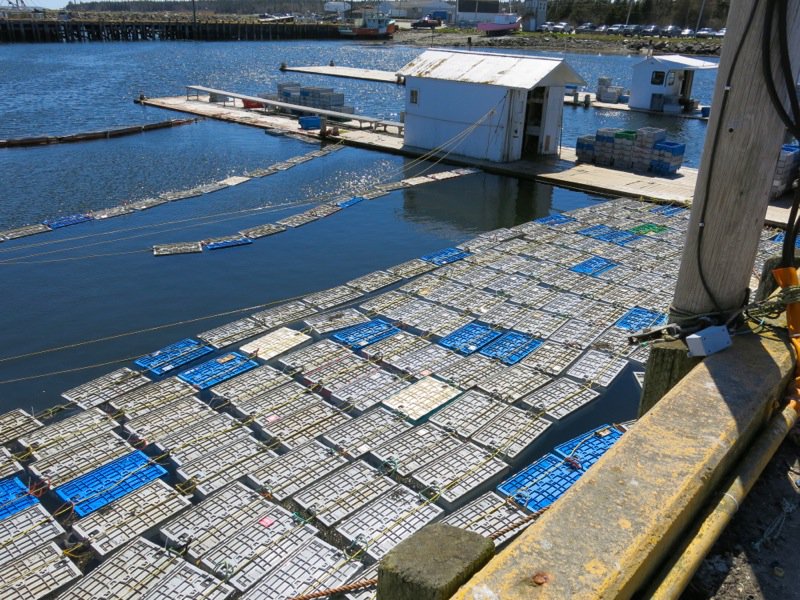
Back to the other side of the wharf: what is going on? Hundreds or thousands of boxes strung together in the water beside the fish stages? I later learned each of these boxes was a crate each housing 100 pounds of lobster. You do the math! The Merriam-Webster Online defines a Lobster Car as the crate, but that is an error. I also later learned that I was looking down at several Lobster Cars! (but, there is only one, below)
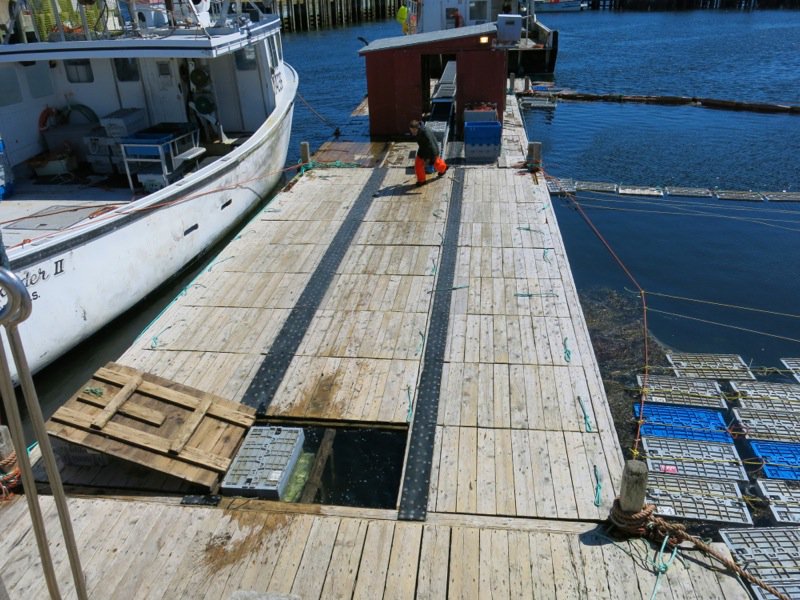
A young fellow bolts out of the next fishing stage, above, one of the boxes in tow. He is moving at a good clip, and drops the box into a hole in the pier, below.
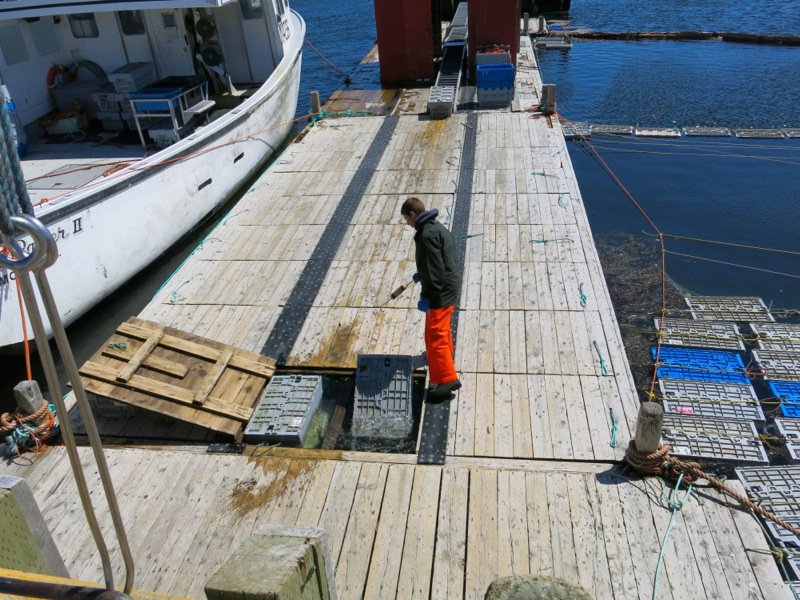
I have been dawdling and taking so much in. I hear, “Val!” from Vanja which is my cue to get moving.
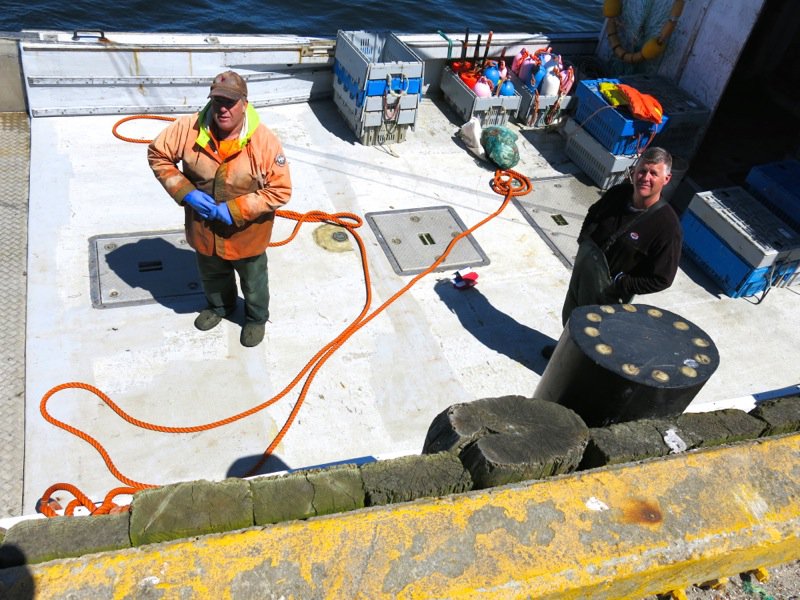
Here are the lobster fishermen that will be taking us out today: Captain Sherman d’Entremont and Troy Amirault.
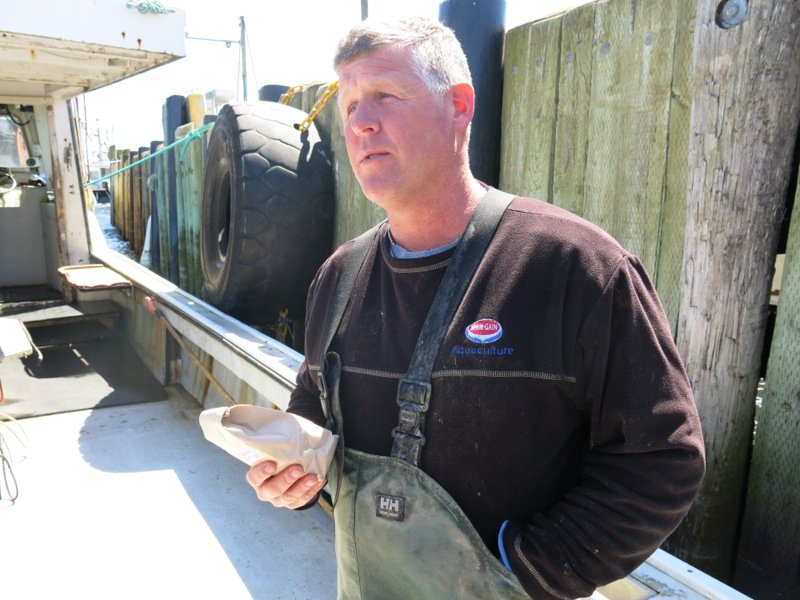
Bernice climbed down the ladder to the boat first, and if she could do it, so could I. Above, Captain Sherman d’Entremont is holding a bag of Gold Forest Grain Pancake Mix, a gesture of thanks from home and Vanja and I. Almost every person we gifted a bag of this to was caught off guard. Pancake mix? I should have attached a little tag explaining that the Red Fife Wheat this organic mix is made with is a Canadian Heritage Wheat and as wheat is an iconic representation of the prairies where I come from and this farmer is an incredible steward of his land and everyone loves this product at home, it seemed like the perfect little Canadian Food gift to “trade” as an expression of thanks for us.
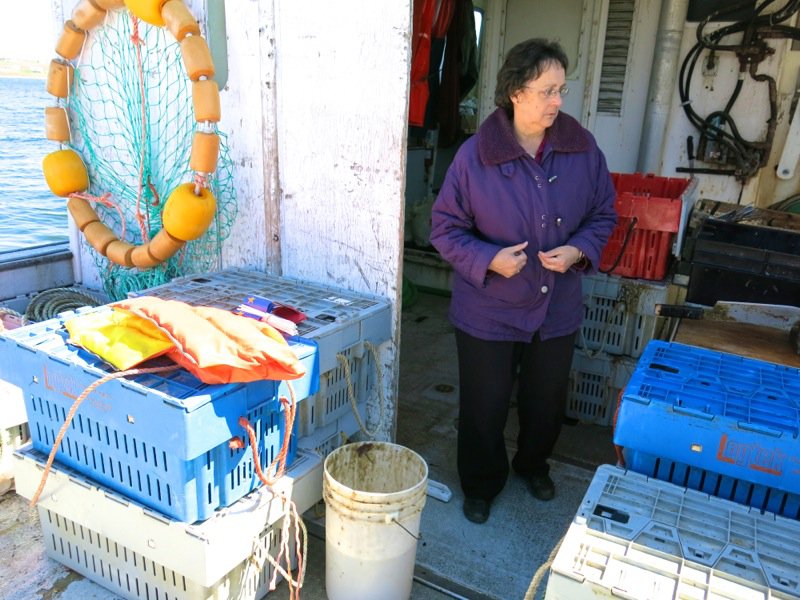
This is a working lobster fishing boat. This is not a tour company. Réal was a Lobster Fisherman and as this is a small, tight Acadian community, Bernice was able to make this little dream of mine happen. Now that I know better, I think Bernice can almost make anything happen.
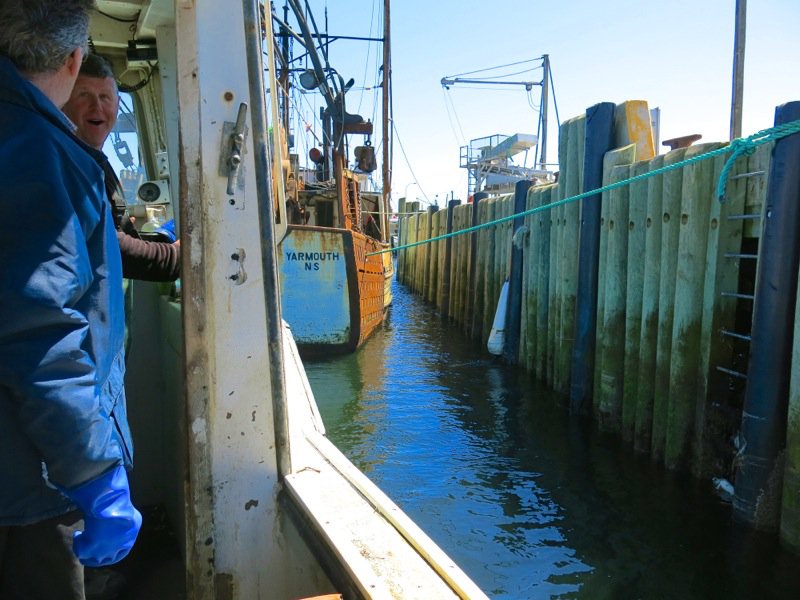
Pulling away from the wharf, you can see the ladder. The water level changes dramatically whether the tide is in, or out. Now, the tide is high.
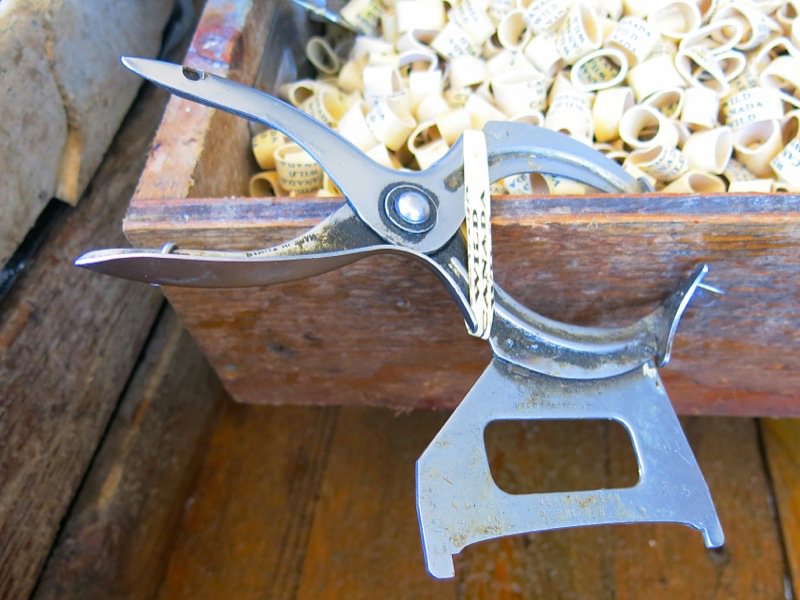
An up-close-and-personal-view of a lobster gauge. (Oh, how easily we land lubbers are fascinated!)
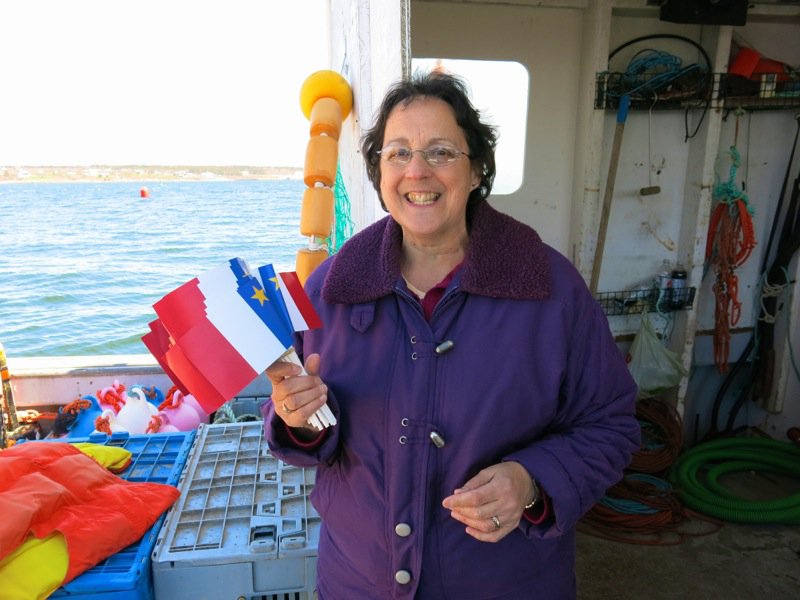
Fishing has been the way of life in this area for over 400 years with the addition of lobster and scallop fishing undertaken in the late 1800’s. You may note Bernice’s enthusiasm as she hoists her Acadian flags. You many also have noticed that the captain has the same last name as Bernice and Réal. Pubnico was founded in 1653 by Philippe Mius d”Entremont. He was Réal’s great grandfather 9 generations back. Pubnico is the oldest Acadian community still inhabited mainly by Acadians and most residents are descendants of the founder. Pubnico is derived from the Mi’kmaq word “Pobomcoup”, meaning “a place where holes have been made through the ice to fish”. When lobster fishing began in this area in the late 1800’s, it was on a very small scale, mainly for family eating at the onset. Lobsters were then considered poor-man’s food and were part of the diet throughout the year. They were plentiful and tasty, but a market for this kind of shellfish did not exist so they were essentially worthless in the marketplace at this time. The market developed at the onset of the 1900’s in the US and live lobsters were then shipped to Boston and Main on small freighters. This tradition is now over 100 years old and is still happening to this very day. Canadian lobster are received there and repackaged as Boston or Main lobster. Now you know where your lobster comes from when visiting those American lobster capitals!
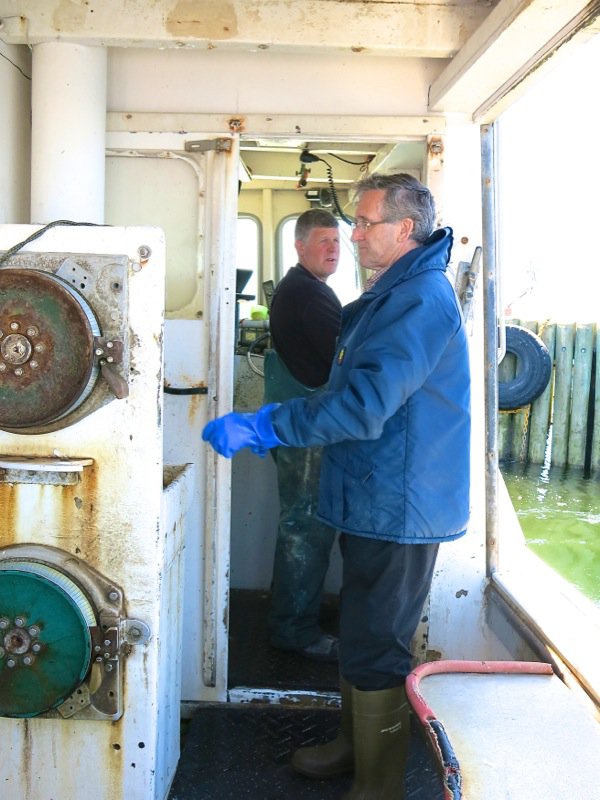
Like any other industry, lobster fishing has its ups and downs. As recently as 2012, the industry was devastated by prices as low as 3 dollars a pound. This year, the price is about 5.50 a pound but the drastic plunge in the Canadian lobster industry as the US economy fell in 2012, drastically effected it.
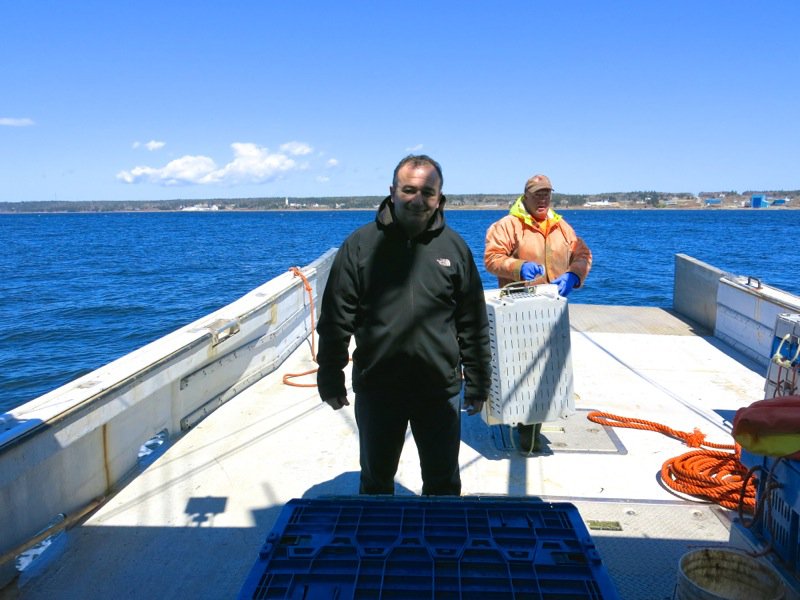
These working fishermen are fast. Vanja and I were like kids in a candy store, gawking around at each little aspect of the boat and simply thrilled with being in one and on the ocean. Everything happened so fast. They had captured a little lumpfish from their fishing excursion earlier in the day to show us. The suction on this baby is unbelievable!
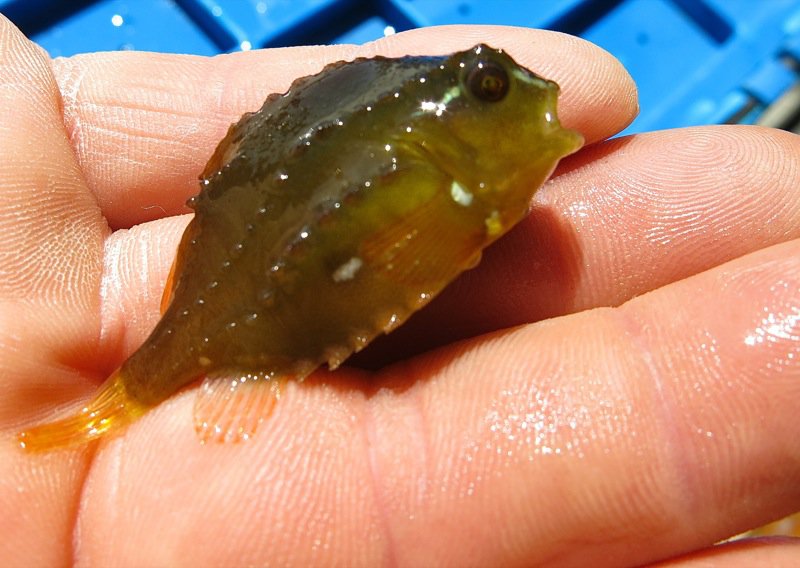
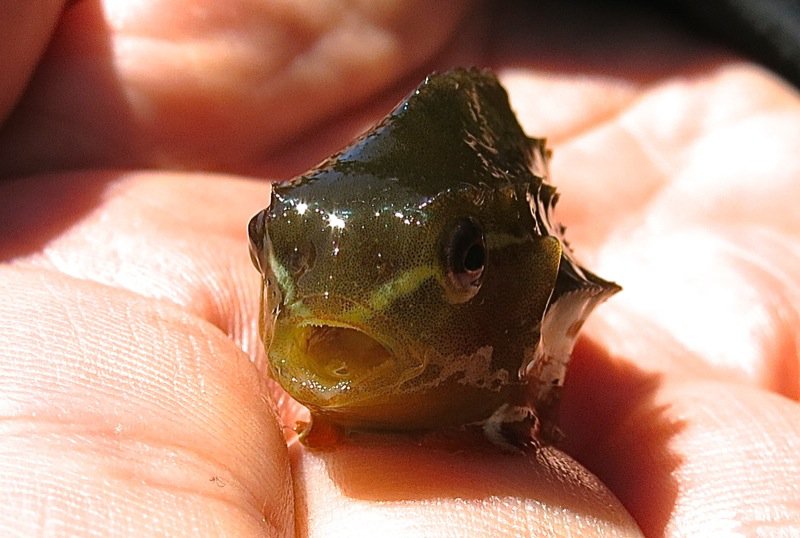
They grow to a good size. Most are familiar with Lumpfish Caviar. To learn that lumpfish attache themselves by sticking like a suction cup was surprising.
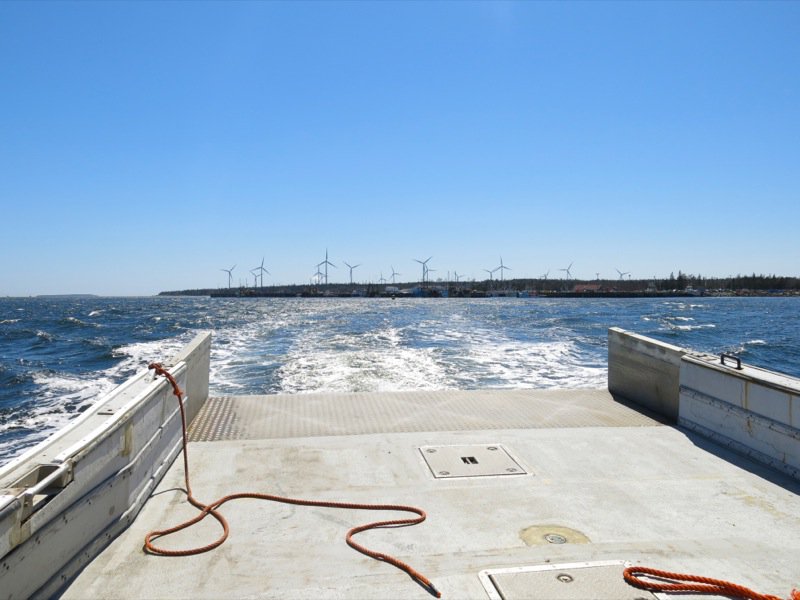
We had arrived in Pubnico only a little more than an hour ago, so this was my first view of their windmills. As wind technology is developing in the area now, the lobster fishery has continued to expand with better boats, gas engines, mechanized haulers, and most recently with technology that makes fishing incredibly safe and as lucrative as possible.
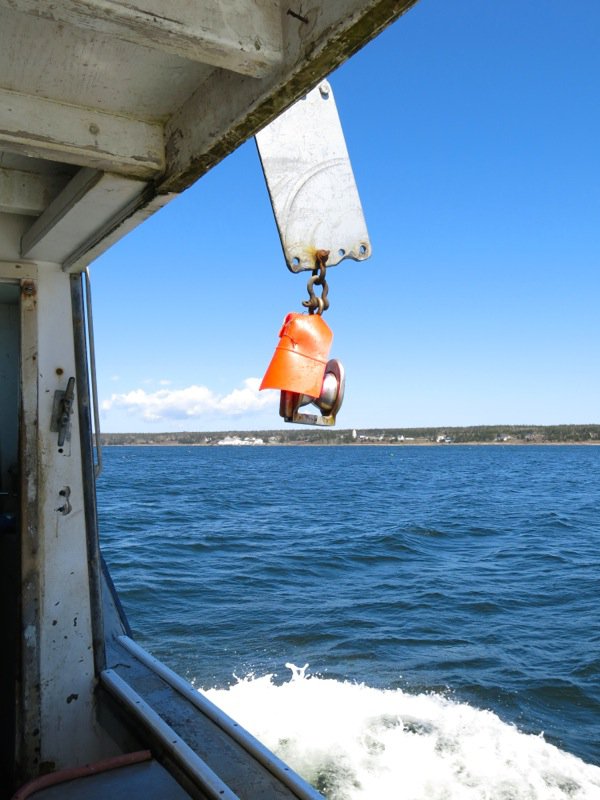
Sherman and Troy had been out fishing for the day, already. Most likely up at 3am and had brought in their haul for the day. He agreed to take us out to get the last few boxes on his line with us aboard. Everything happened so fast. Talk about teamwork and mind reading!
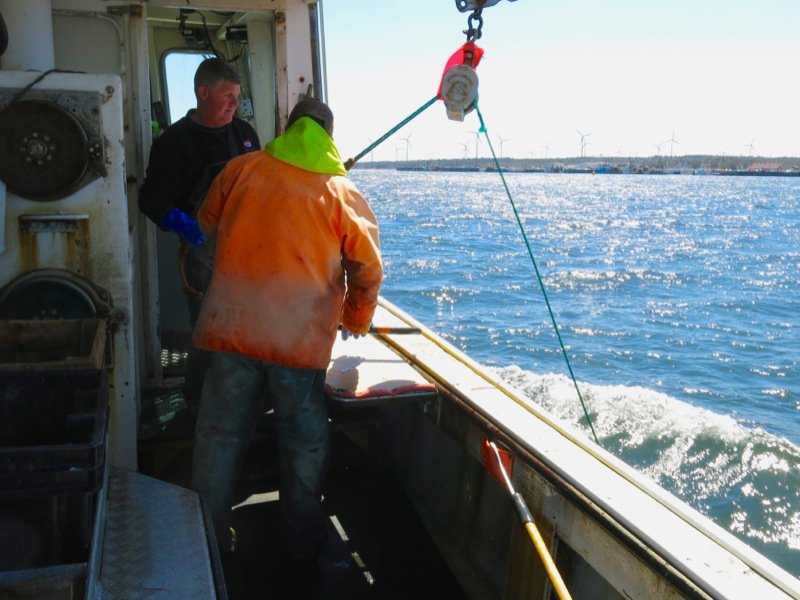
Had no clue what to expect. Didn’t know they had already spied their marker and lined up to bring in their first trap. Troy has already pulled the marker along side the boat and attached the pulley to the trap with his hand held wooden hook.
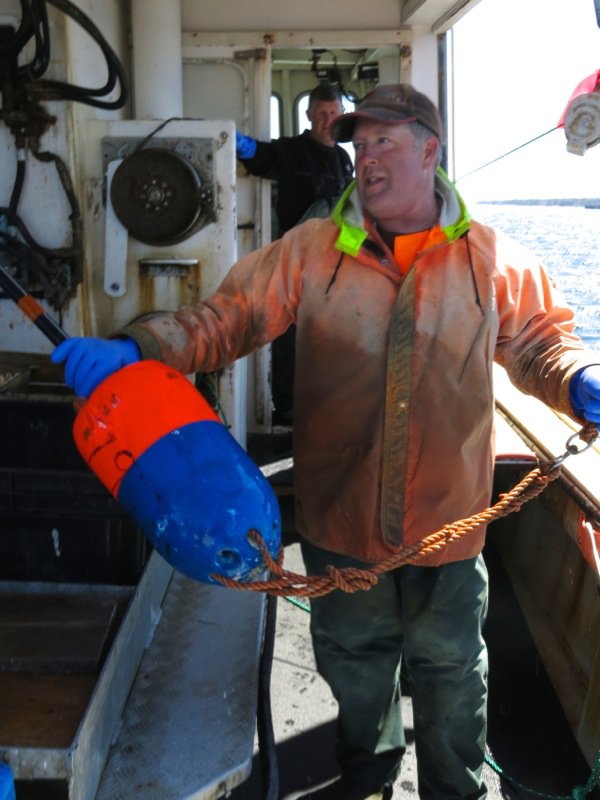
Up comes the buoy or marker that marked their trap, and they have so many different kinds and colours I don’t know how they keep track of them. Yet, they also have their fishing ground and that is sacred and understood amongst all who fish in this inland area.
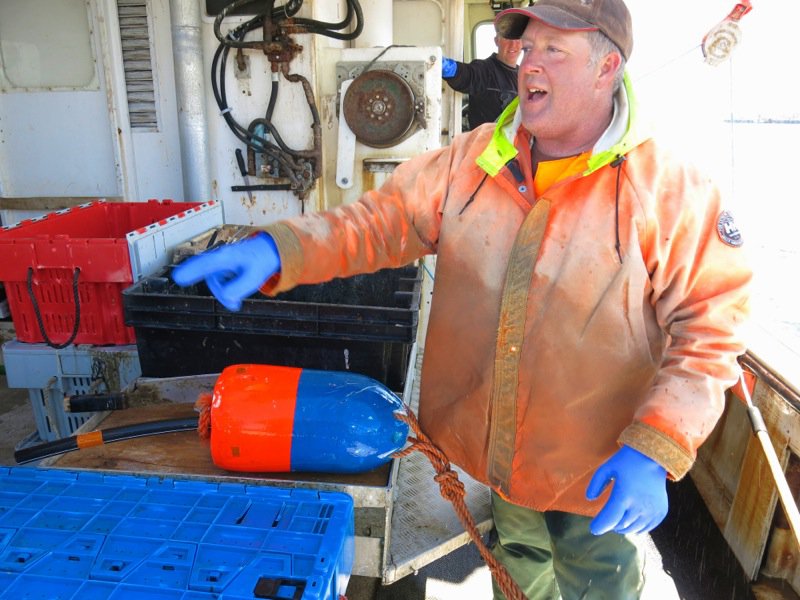
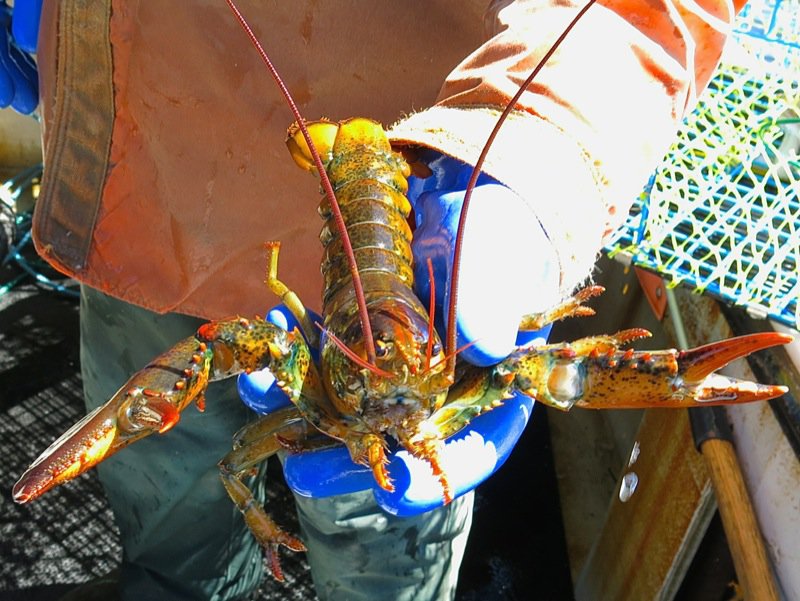
I turned around for a second and the trap was up and dumped. Seriously, a second. Our first lobster. These two work in synchronicity and like lightening.
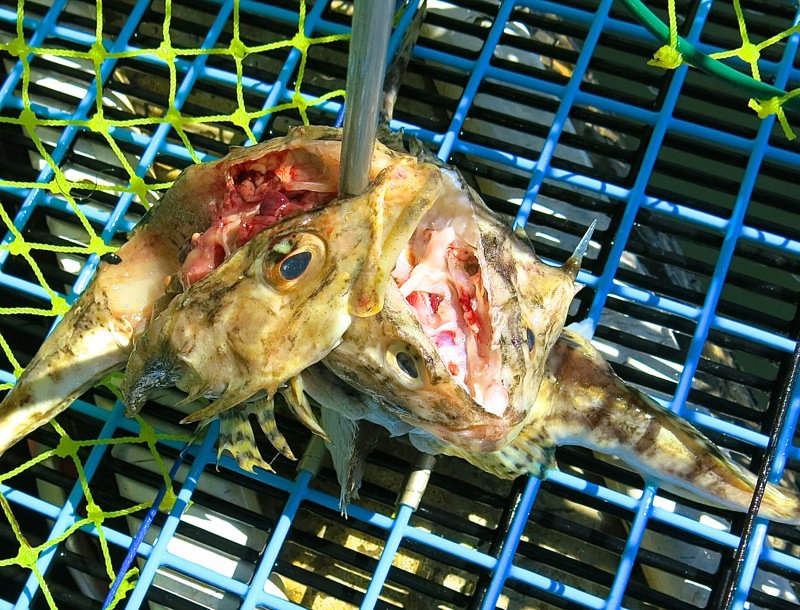
Lobster bait can vary. Everyone uses something different, and at different times, different bait. There are entire households, and many, that are supported by fishing for lobster bait. I was surprised to hear how good these lobsters eat. Herring and Mackerel are both fished for lobster bait. Mackerel is a lovely good sized fish to for human consumption. I was surprised it was used as bait, yet it is apparently quite oily and makes a very good bait. Above is the Spiny Sculpin which is a bottom dwelling, scaleless boney fish. This I get as bait. I would not want to eat it. Perfect.
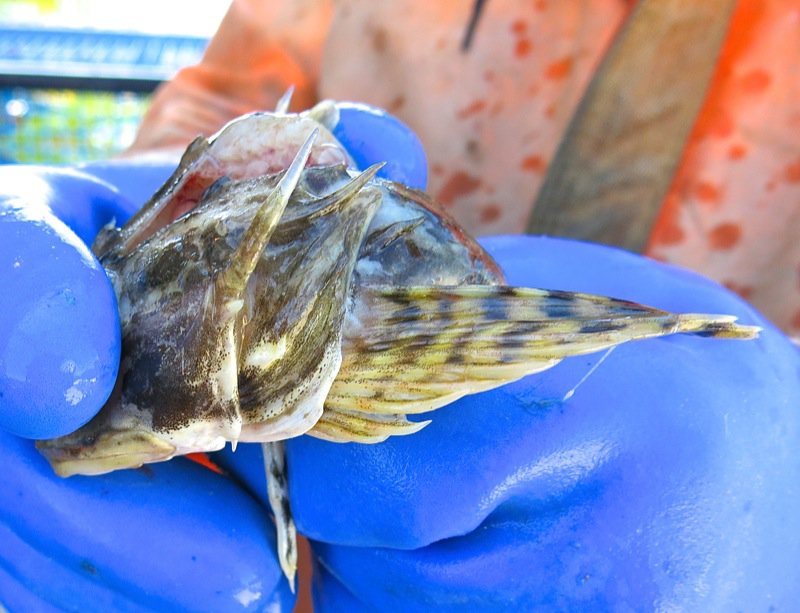
The spiny fins are extremely sharp.
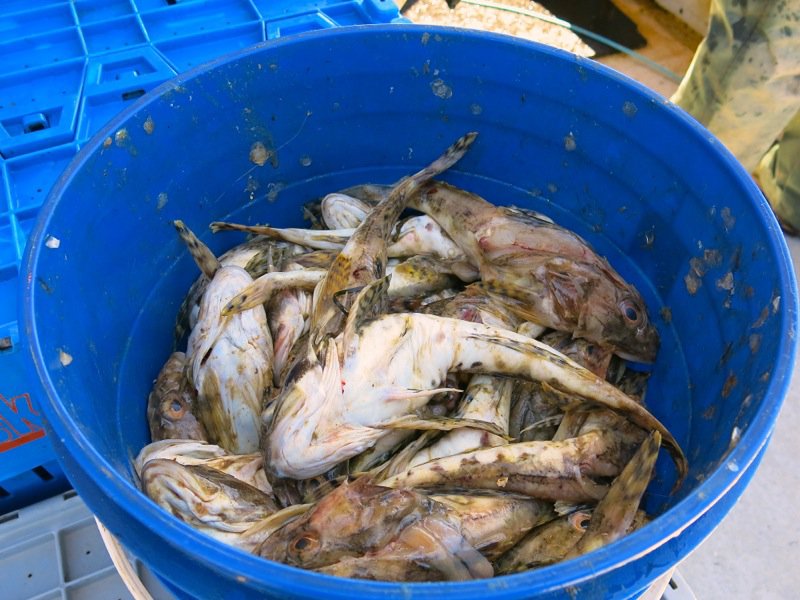
They are very ugly, no? Then again, I have never seen a cute fish.
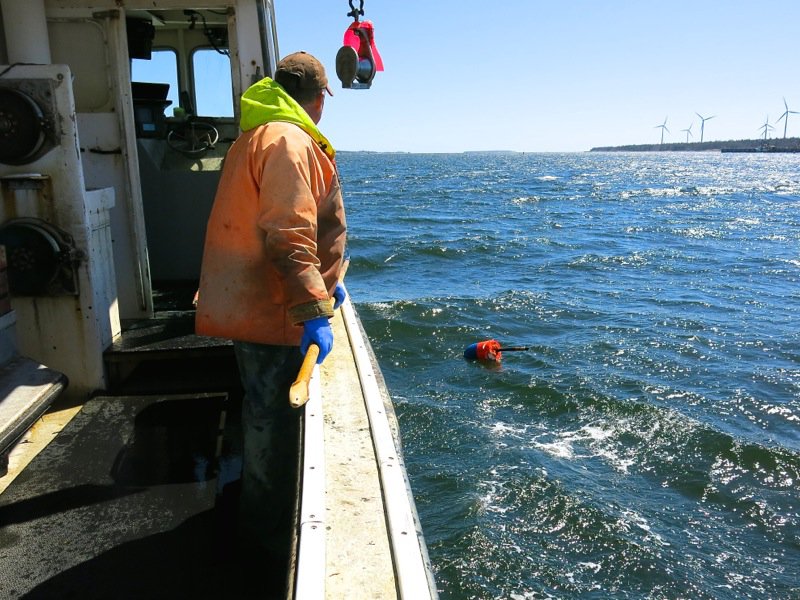
This time, I am ready. Above is the marker. Below, Troy uses his wooden handled hook to bring it in and then connect the pulley to the trap.
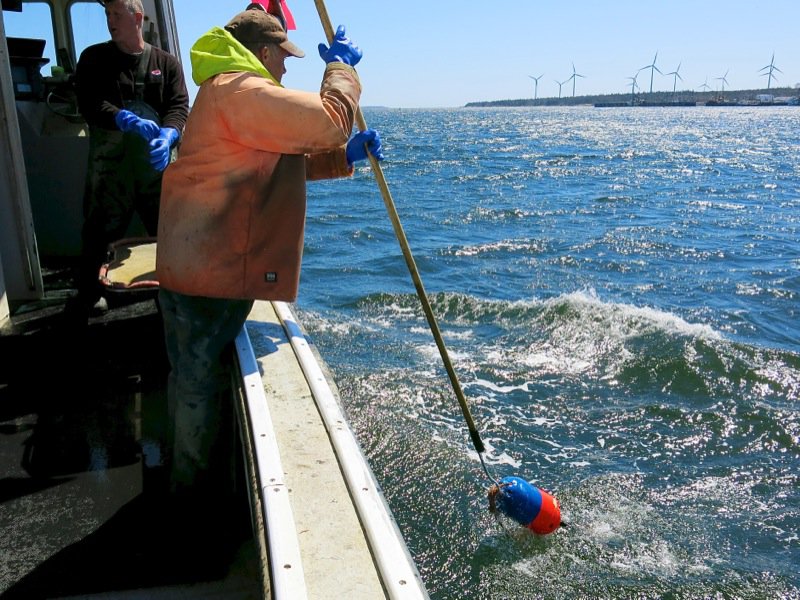
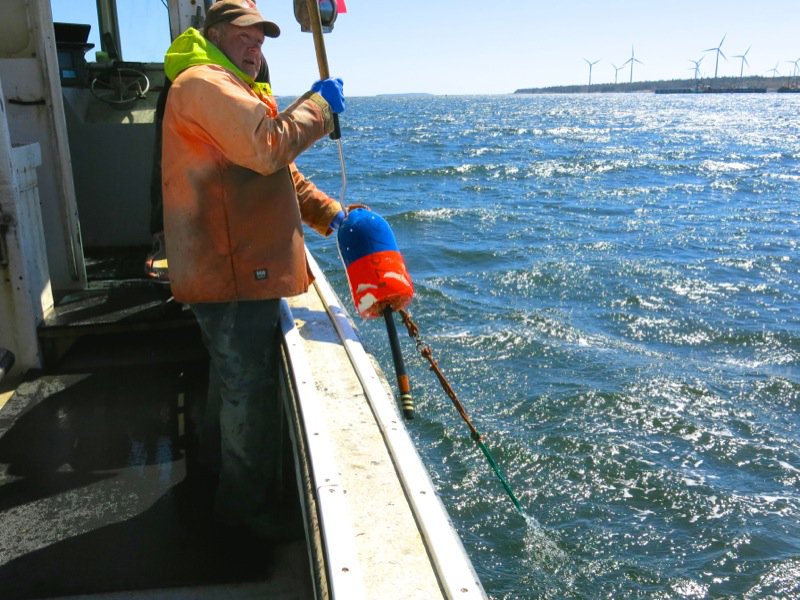
The rope on the bottom of the marker got hung over the pulley and was then reeled in using a motorized reel.
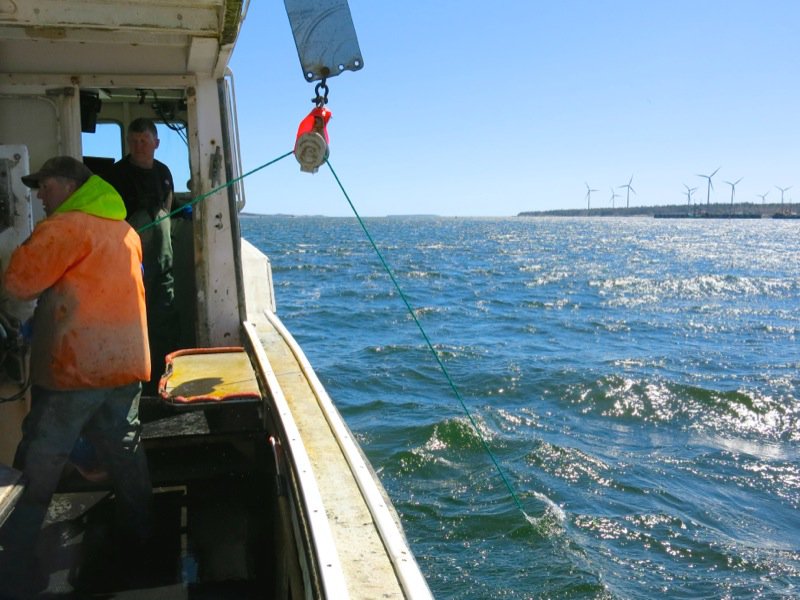
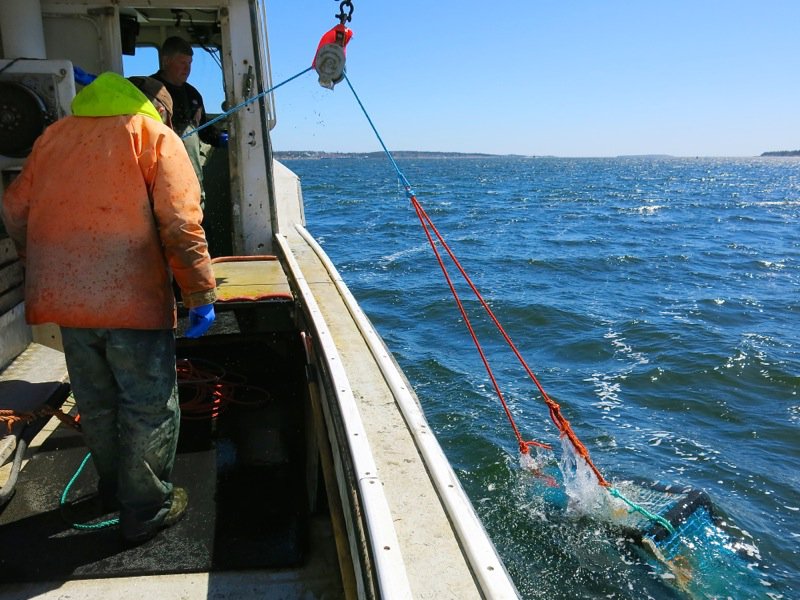
From the bottom of the ocean to the boat!
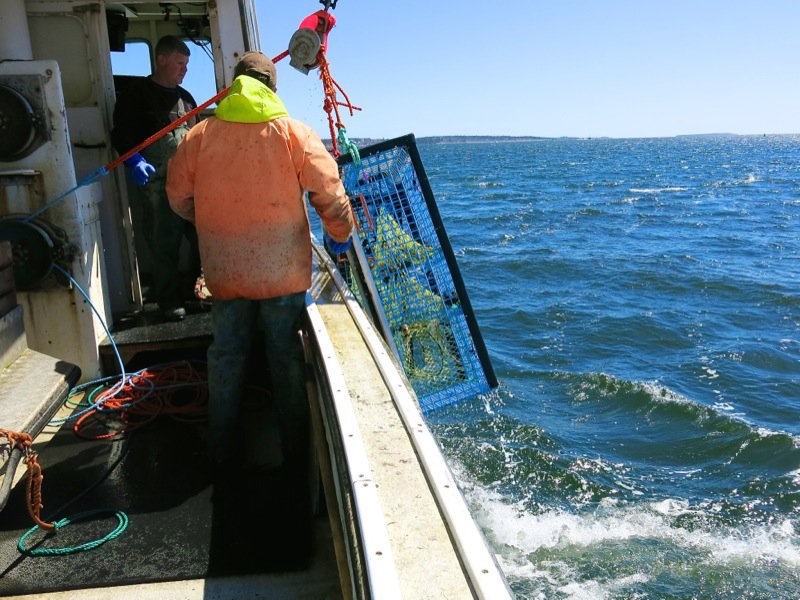
Sherman and Troy are so focused on their work and what they usually do that the trap was emptied before there was time for photos. What have we here? The traps do attract other creatures on occasion. I assumed this would be taken home for a lovely addition to dinner. Nope. Great for lobster feed.
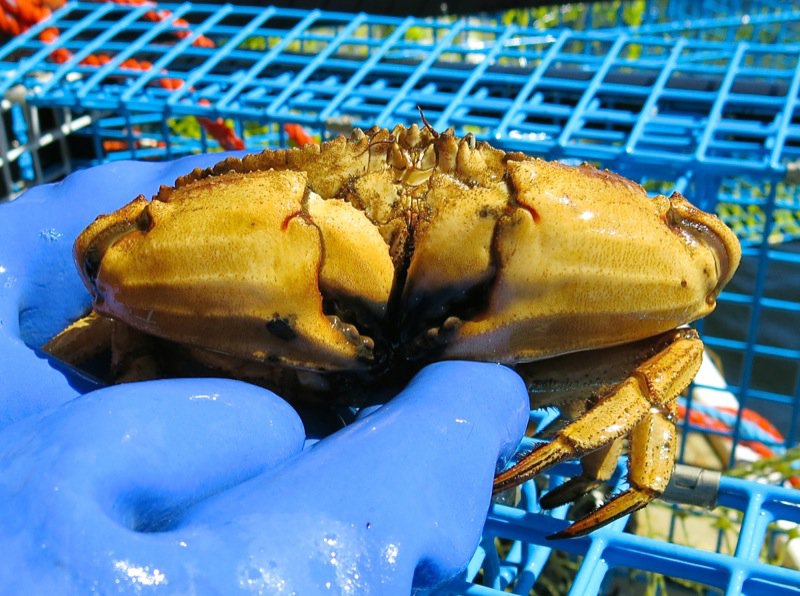
Crabs are so valuable on the prairies – so expensive – that I was incredulous. The lobster get to eat crab? Yup.
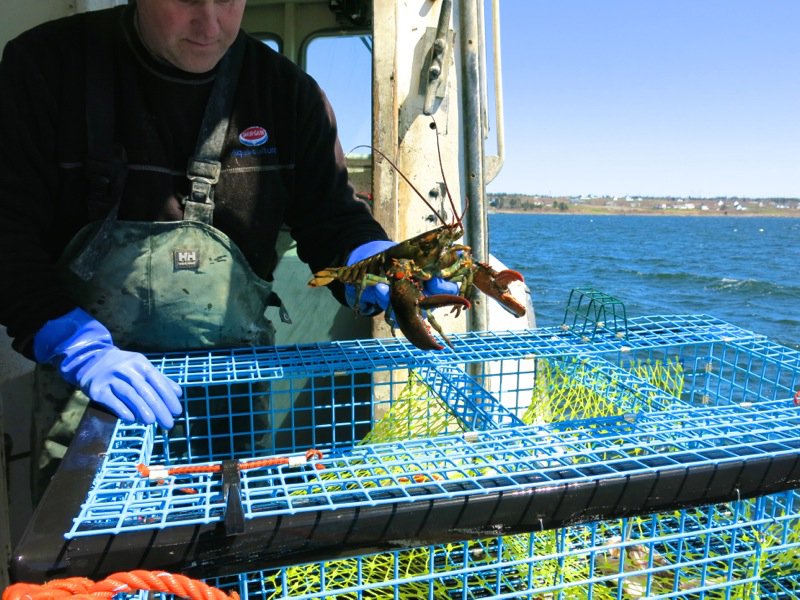
This little fella looks too small. There is a minimum size requirement, or they have to be thrown back.
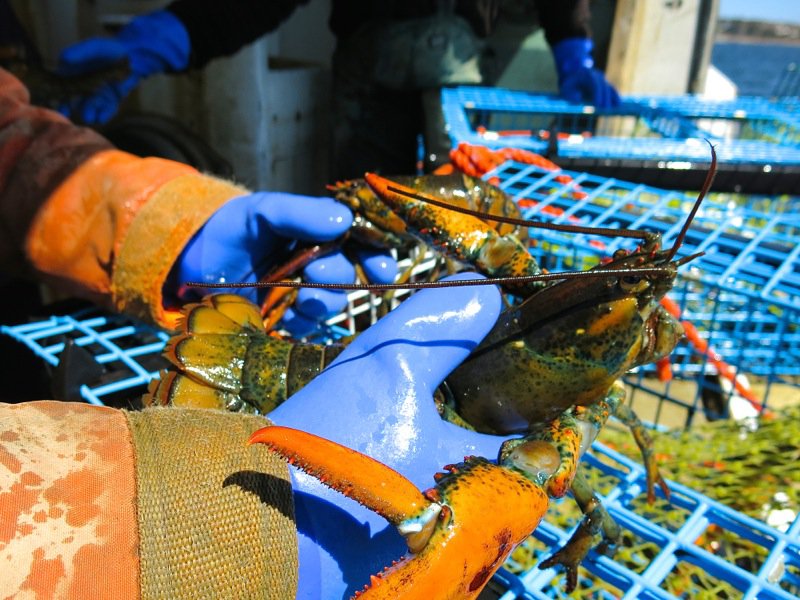
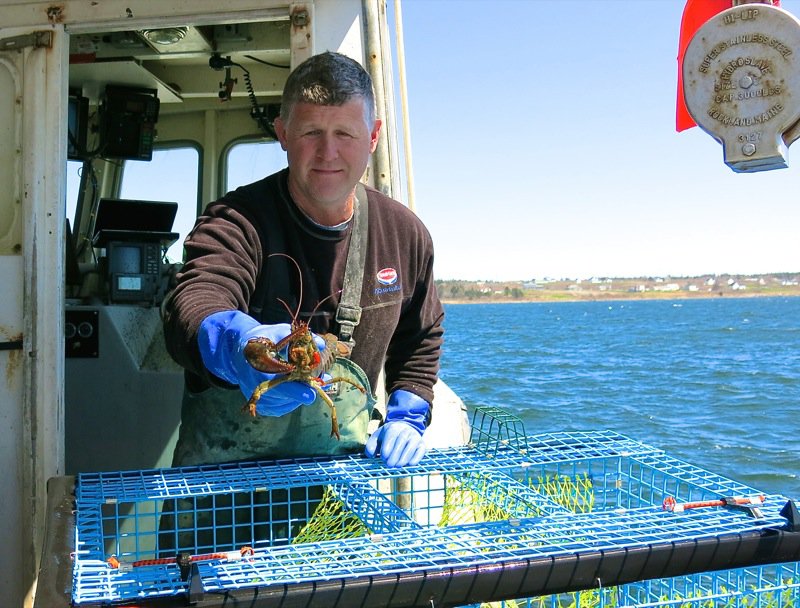
Thank you, Sherman! A photo op! Both Sherman and Troy were open and eager to answer any questions. What generosity of spirit to take the two of us at the end of their 12 hour working day
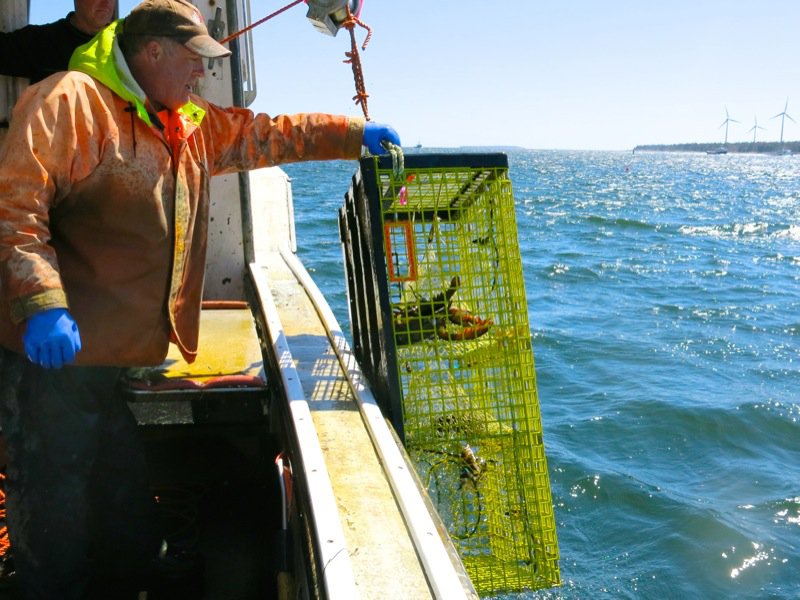
Next trap is pulled in and I have the camera on it. Only one lobster. Now that is odd.
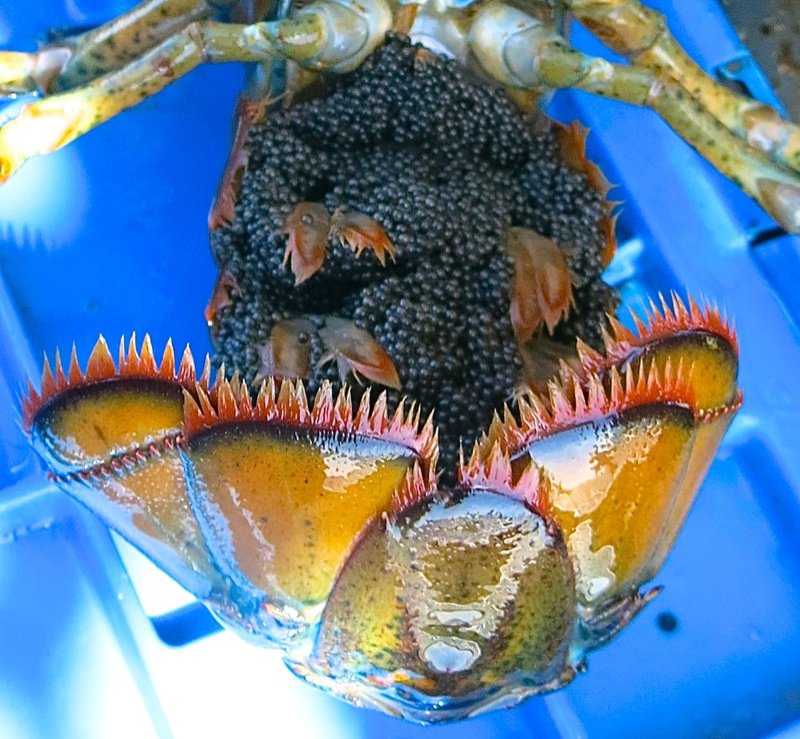
It is a female laden with eggs. To propagate lobster, she must be gently tossed back into the ocean. A primordial urge to get a fingerful of roe to taste kicked in and I had to numb it. I was surprised by that urge.
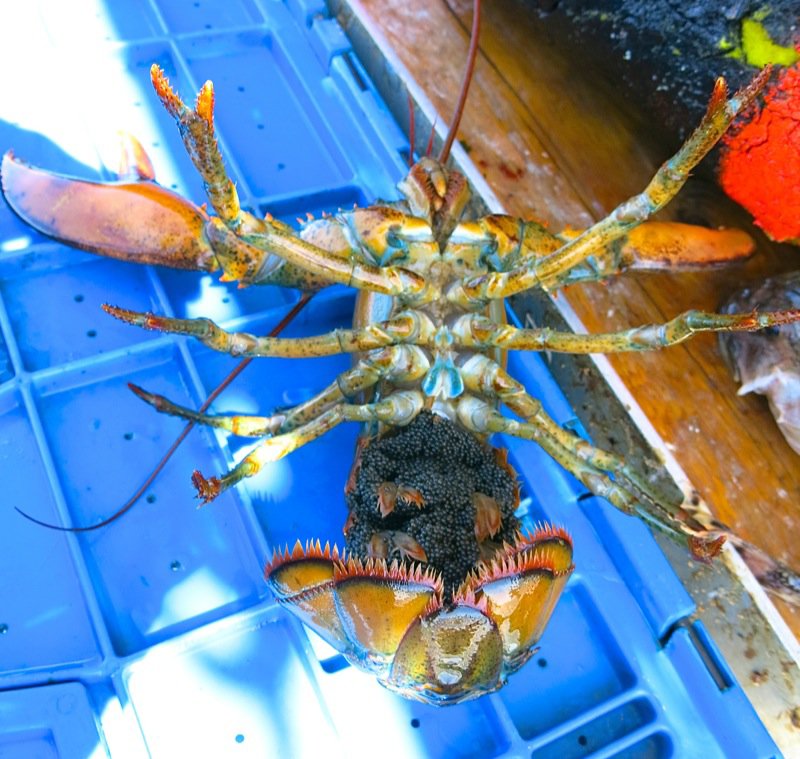
How fortunate to see this natural spectacle.
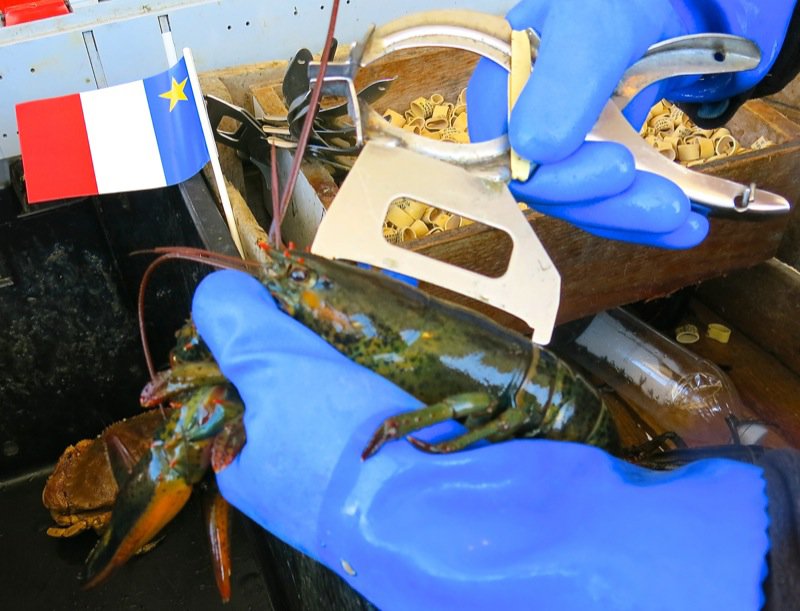
Troy measures the little lobster to see if it is a keeper. The carapace length is measured from the rear of the eye socket to the rear of the carapace on a line parallel to the center line of the bodyshell. Lobsters measuring less than the minimum legal carapace length, or larger than the maximum legal carapace length, must be immediately returned. Apparently, a common error is to measure over the rostrum or horn located above the eye socket. You can see, below, that Troy is certain that his gauge is in the extreme rear of the eye socket and below the horn.
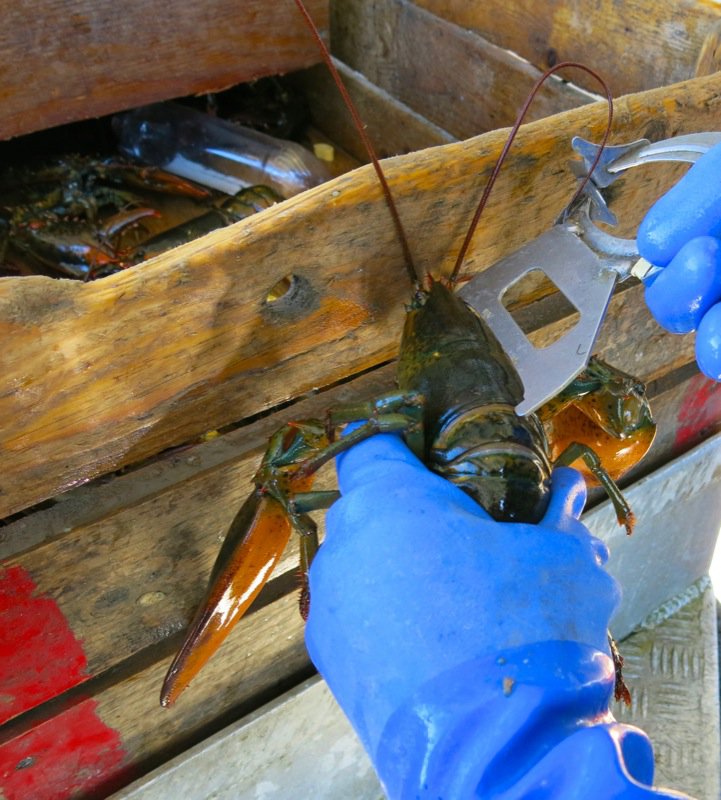
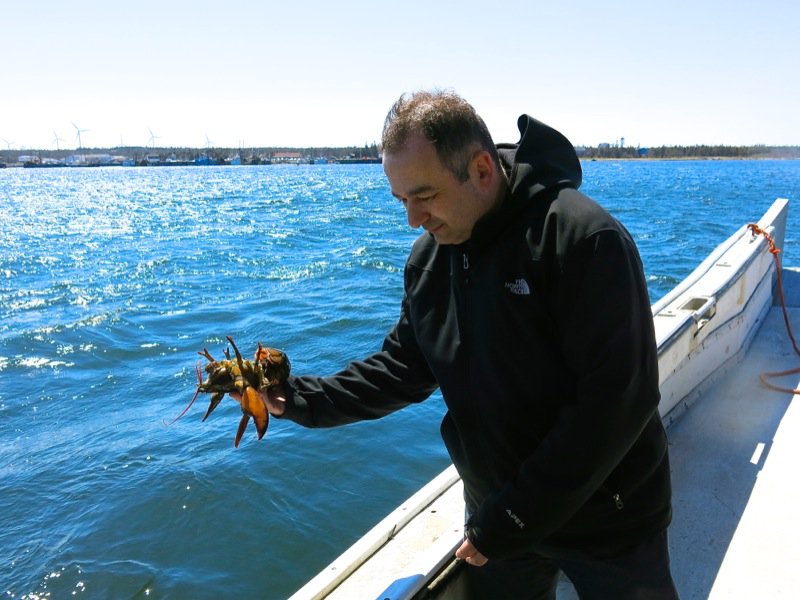
Vanja gets to return the little fella to his home.
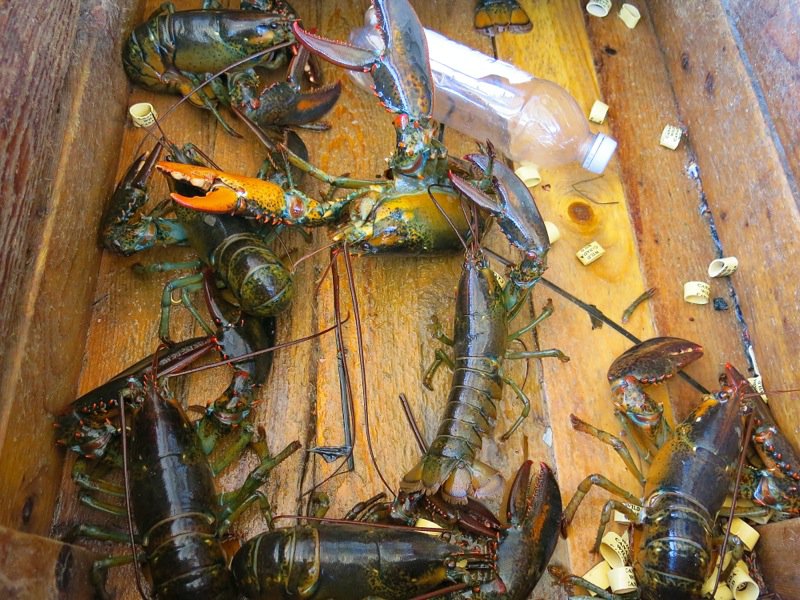
These are the ones we have kept from the two traps. The bottle is there for frame of reference regarding size. The elastic bands haven’t been put on yet and must be soon, as these fellows will pinch one another to death. On a side note, at the onset of the lobster fishing era, in the early 1900’s wooden lobster plugs were invented to close the claws. This greatly increased the life of the lobster in transit and the industrious people of Pubnico started hand whittling these plugs and soon became the Lobster Plug Capital of the World, supplying them to Lobster Fisheries, everywhere. The Lobster Plug Story is a testament to the industrious nature of this tightly knit Acadian community. It was as recent as 1984 that elastic bands have been used by the industry to replace these plugs.
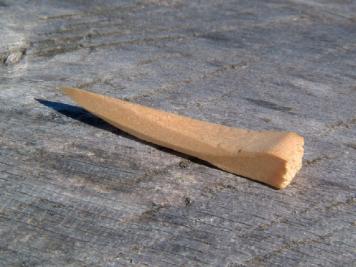
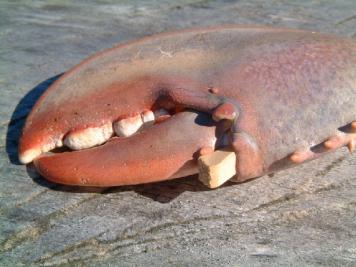
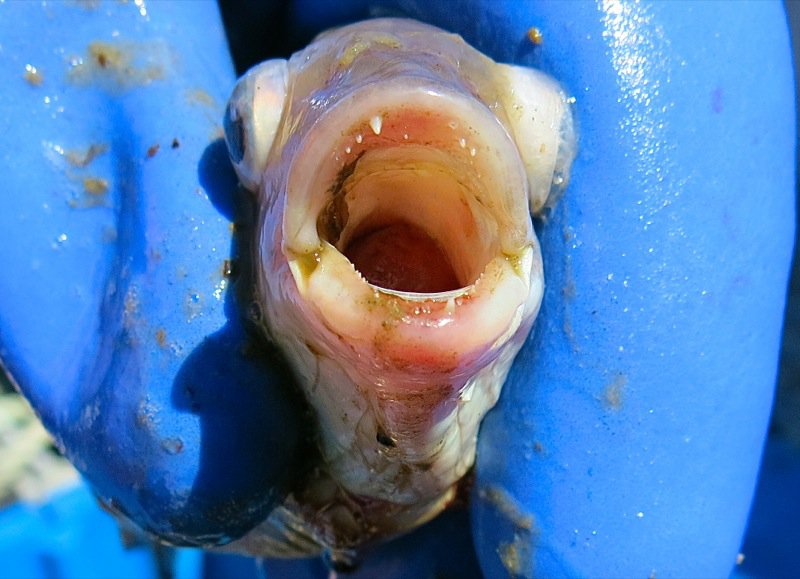
Do fish have tongues. Every Newfoundlander will tell you that codfish do! Do fish have teeth? This little fellow needs a check up!
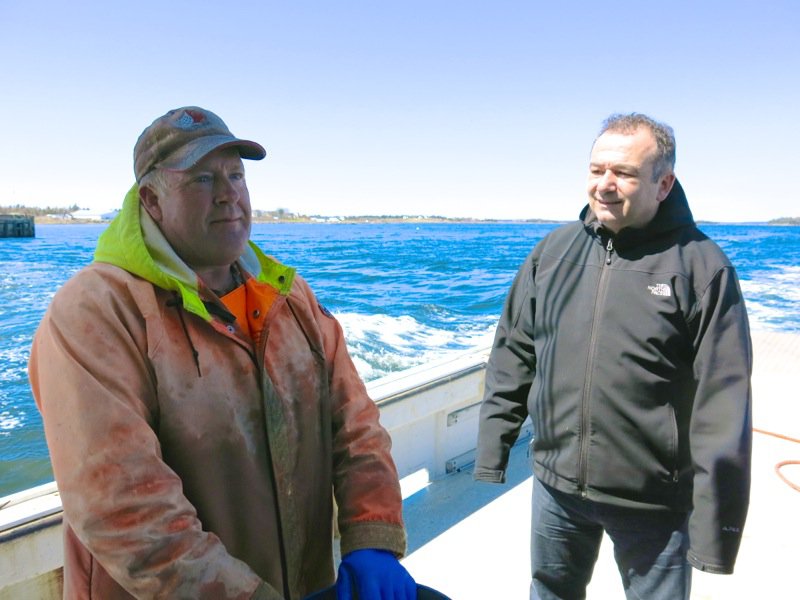
Three baskets in tow, we head back to shore. This blue skied sunny day will be one of the last we see for several days this trip.
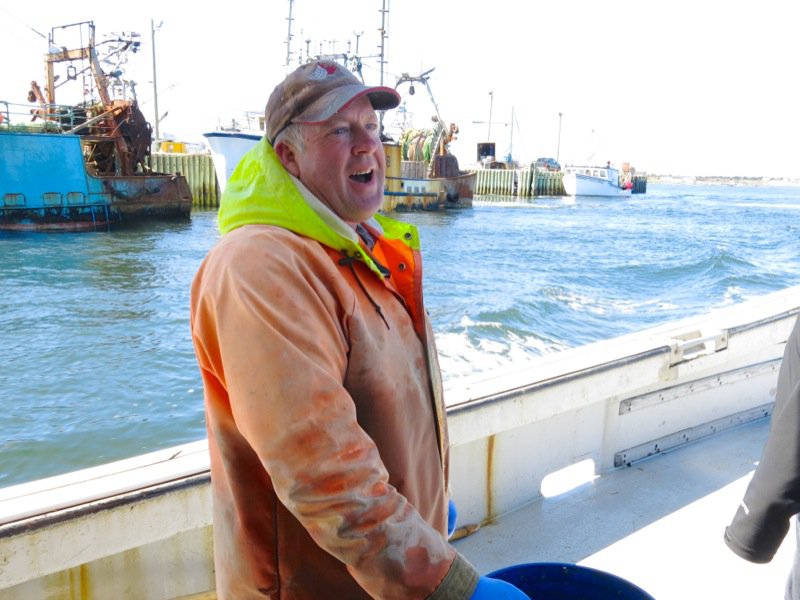
500-600 pounds of lobster a day would be considered a good haul. There are three areas for lobster fishing in the ocean: inland (where we are) middle, and outside which will go up to the American line. There are also Canadian lines, or borders, in Lobster fishing. Each wharf of pier, is given and area in the water with borders that will connect it to the next lobster fishing area. These lobster fishing areas are also mapped seasonally and given specific dates when the lobster fishermen in that area can fish for lobster. This promotes sustainability for the lobster and ensures there is always fresh lobster somewhere in the province of Nova Scotia. Only in the past 20 years have Lobster Fisherman started networking and forming organizations to collaborate on marketing to maintain fair price for their product and when the US ecomomy fell a couple of years ago, the situation became critical. Did you know that our Canadian Lobster industry was so closely tied to the East Coast? “There is a long history of relationships with the Boston Pier and the Pubnico lobster fisherman,” Bernice said. “Where our smackers (people with boats who take our live lobster to boston) travel down to Boston with our lobster. ” It is then packaged and sold as Boston lobster. Today, most lobster from Nova Scotia and particularly Pubnico, goes to Maine and Boston. Veronika Brzeski, a lobster scientist from Cape Breton, confirmed this for Nova Scotian lobster. “It is a huge problem. It is very difficult for restaurants to buy local lobster from their area within Nova Scotia as so much is exported.” Sounds like our wheat problem in the prairies.
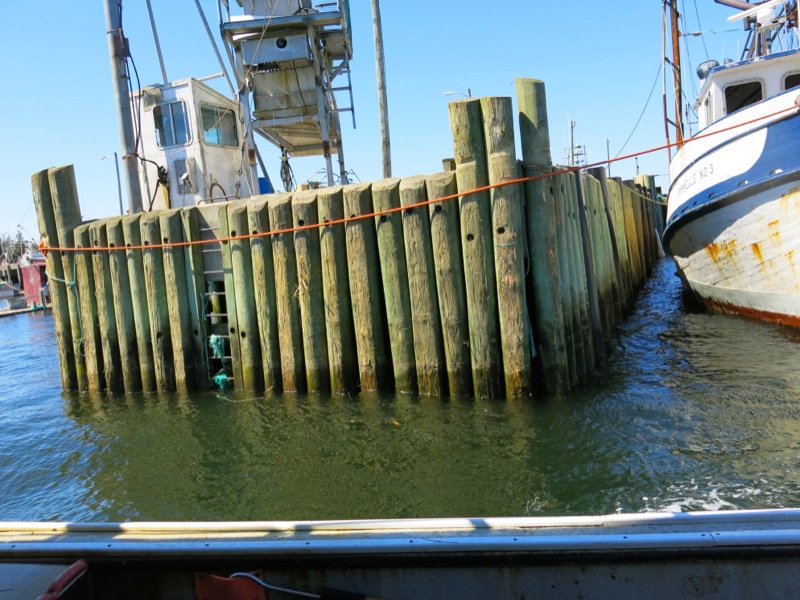
Here is our ladder back at the wharf.
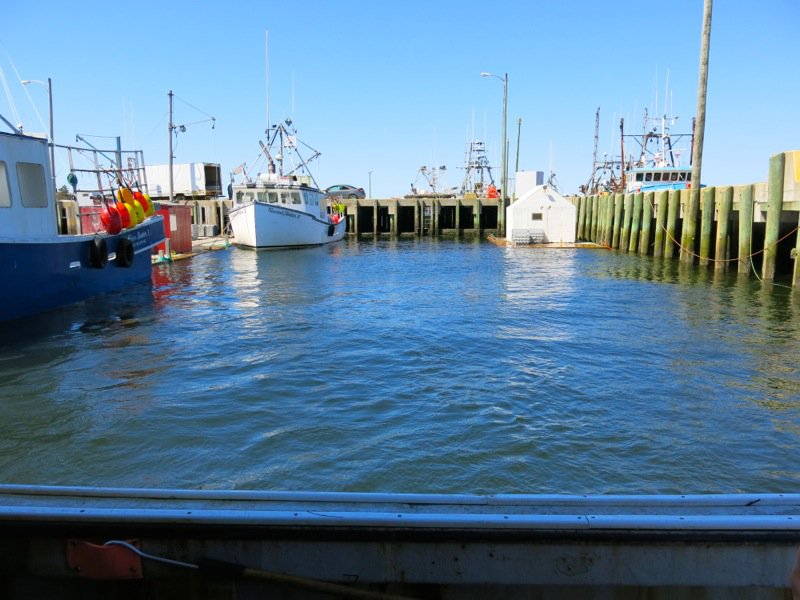
But where are we going?
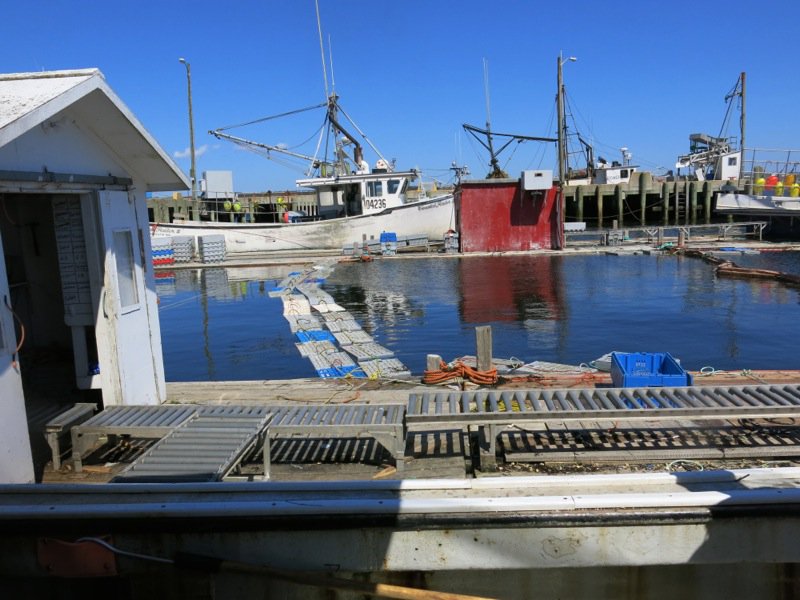
Ah! To a Lobster Car. Bernice had told me she would take us to “the lobster cars”, but we prairie folk have no frame of reference, and at this point, I had no idea what this was or where we were going.
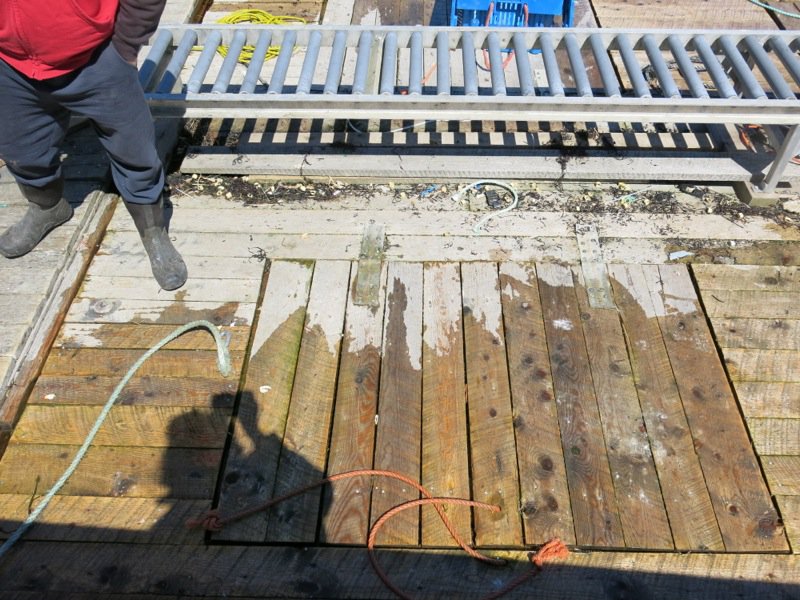
What I did know is that I had to jump off of the boat and land there. Photo first. Maybe my last.
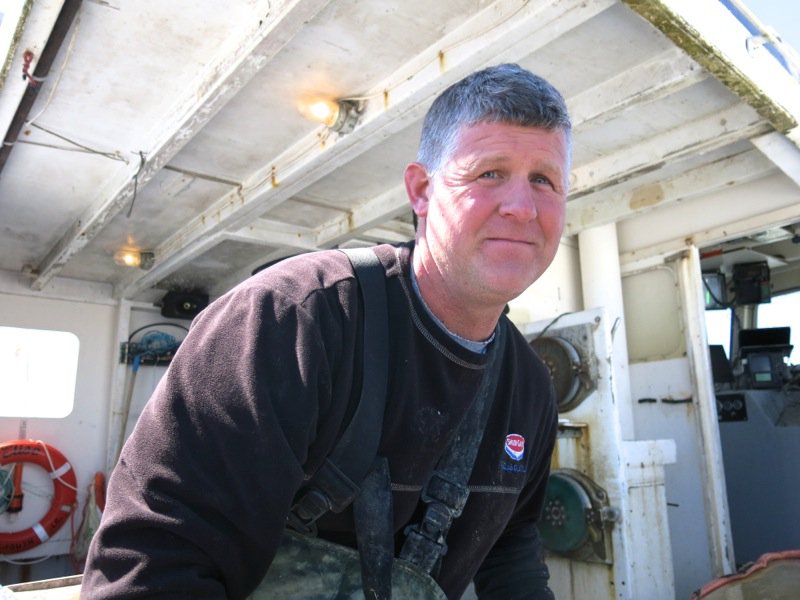
Lobster Fisherman and Captain Sherman d’Entremont bids us farewell and I cannot thank this man enough for the privilege of this lobster fishing experience.
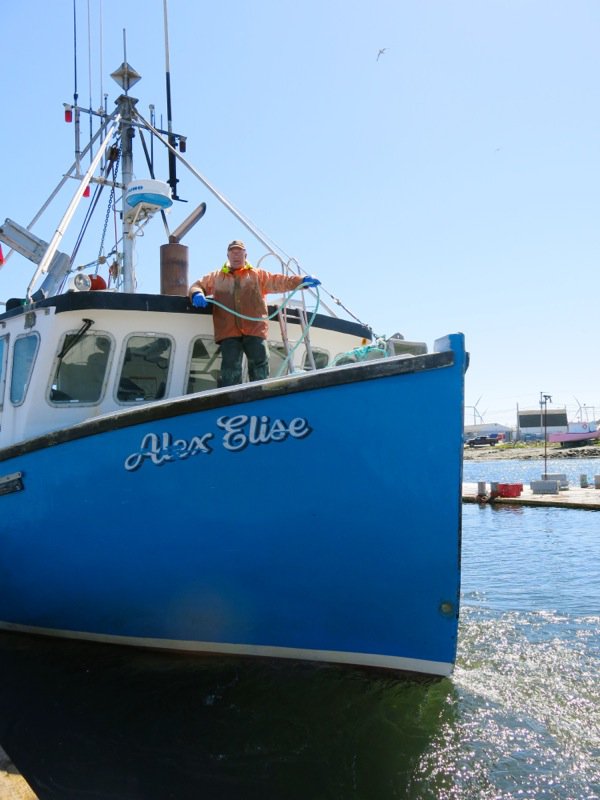
As the Alex Elise departs, I watch…
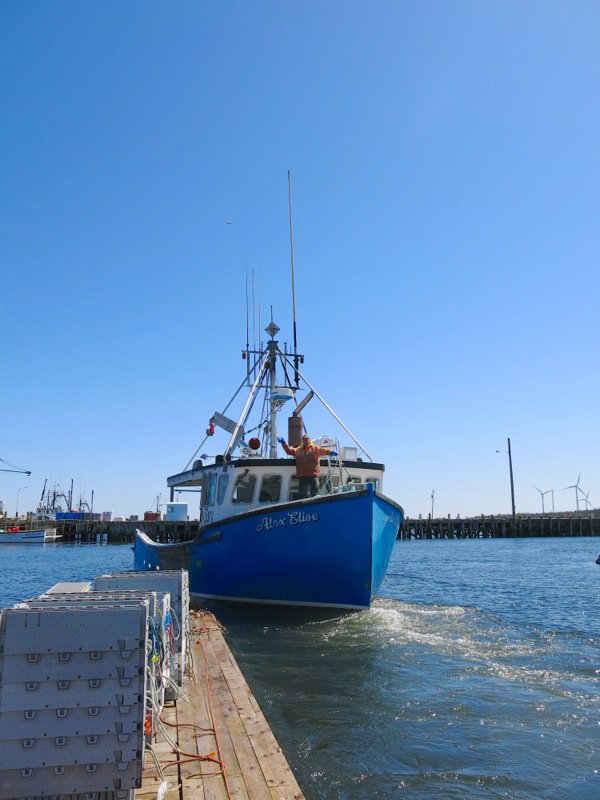
…and bid Troy and Sherman farewell as we turn to meet a couple of new fellows ready to tour us around a Lobster Car.
Note: The introductory photo: me with the lobster, was actually taken on the lobster car. We didn’t catch one that big on the boat!
Afterword: Captain Sherman d’Entremont e-mailed Bernice after reading this post and sent her the photos of a blue lobster they caught 3-4 days after we were fishing with him and said she could send them to me. The colouration is caused by a genetic defect that causes the lobster to produce an excessive amount of a particular protein that gives the lobster the unique colour. The odds of getting a blue lobster are pegged at one in two million, so I can only imagine the “Woots!” on his boat, that day!
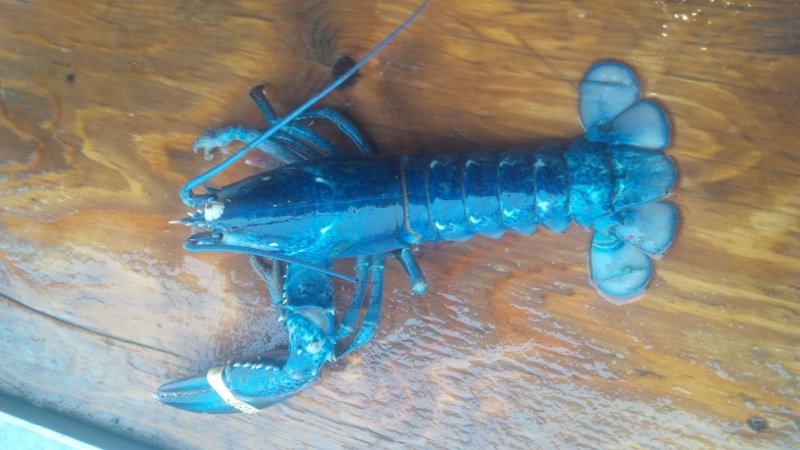
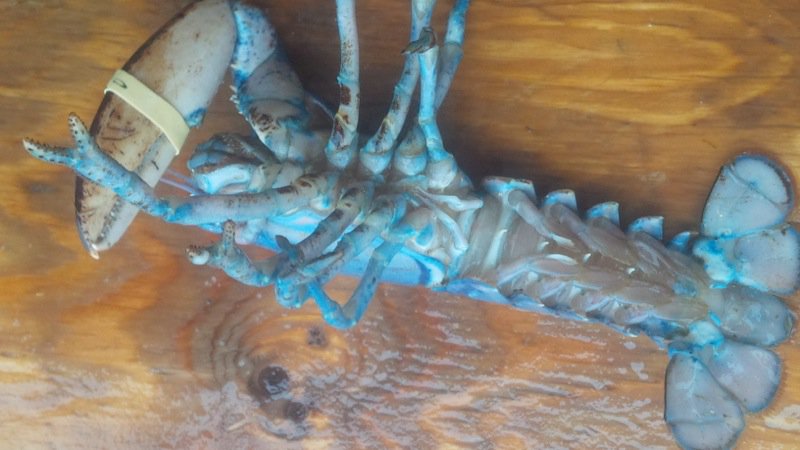
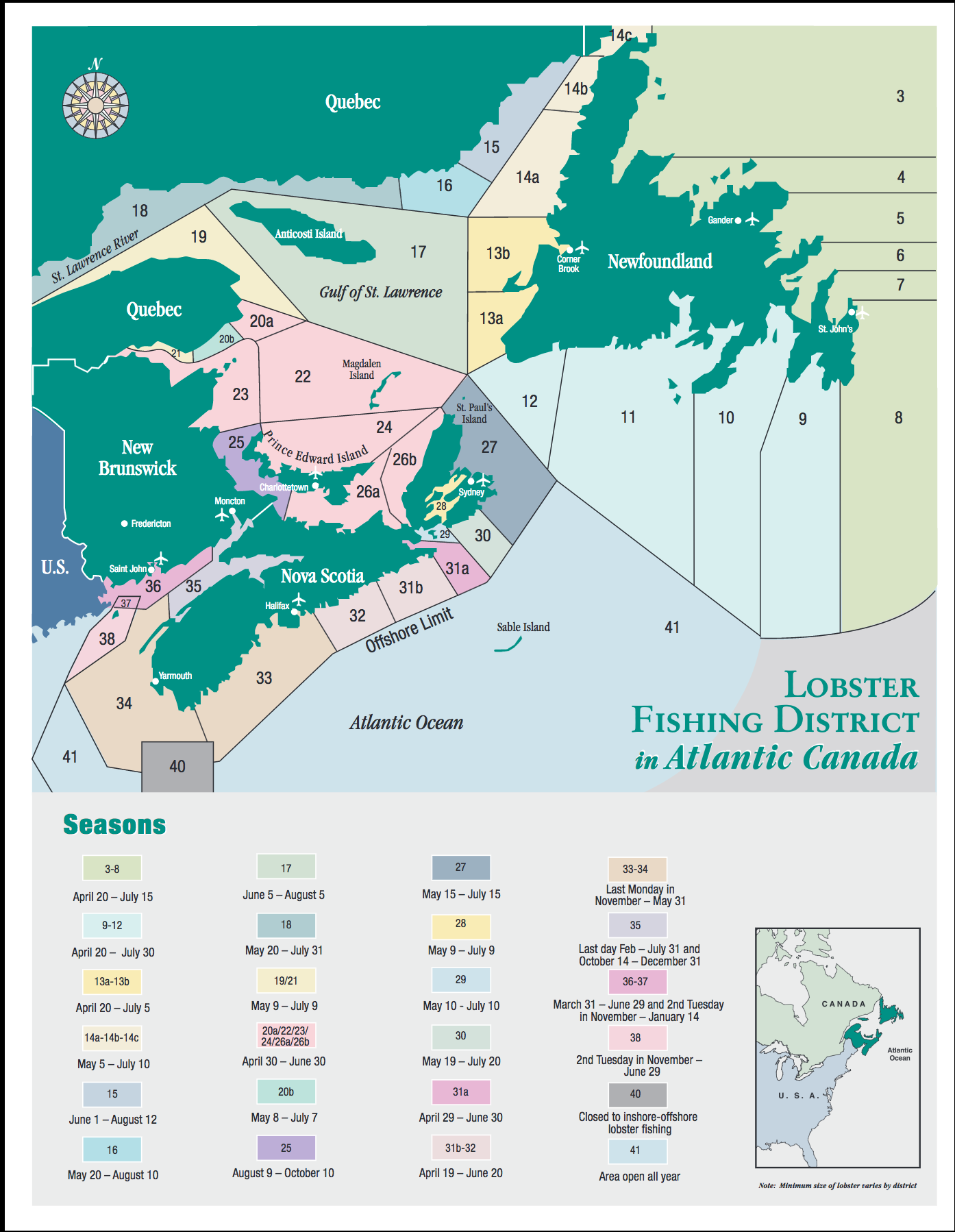


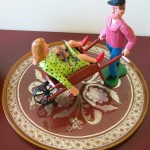
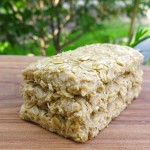

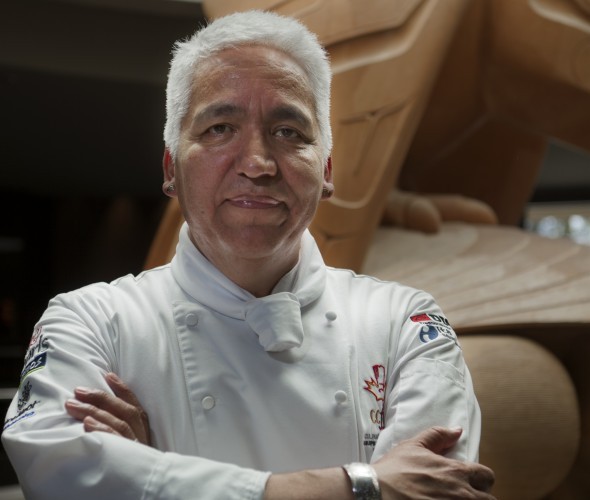





What a wonderful day for fishing. The lobster fishing in South West Nova Scotia is over.The lobster season is the last Monday in the month of November until the end of May, But let me assure you that there are lots of lobsters in our holding tanks (pound). Come see me at the Musée des Acadiens des Pubnicos or have a taste of our lobsters at our local restaurants in West Pubnico , Nova Scotia
Didn’t we ever have fun, Bernice. I am finding that in almost each post, I feel a need to repeat all of the specific information included in the last, so I am very happy that you put the exact time for the fishing in the Pubnico area as that would have most likely been a revision I would have added. I am now writing about the Lobster Cars, then about eating a couple of these fresh from the ocean Lobsters at your house…. one can never get enough lobster, or learn enough about if. Bernice has, believe it or not, offered to continue to connect tourists, like myself, with people in her area to experience Pubnico as it should be experienced. I have only just begun to write about my adventures there!
🙂
Valerie
winter in “the palace” corner of hwy 3 and hwy 335 in pubnico-my memories of fog horns at 3 am-as pickup trucks pick up the various workers at their homes to go work on the lobster boats-sheer torture work-as is quoted in book written by scotian fisherman